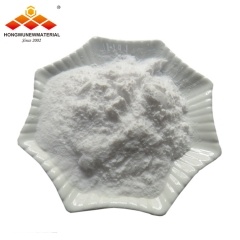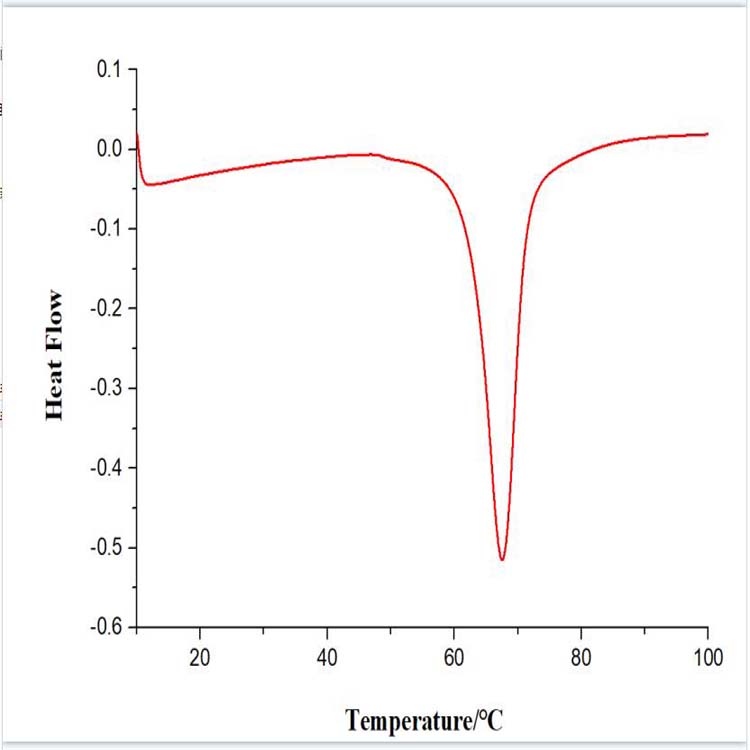The same material sometimes has different
crystal forms. What is the difference between them? Some information about
Hongwu nanomaterials has been found as follows for your reference:
1. TiO2-Titanium Dioxide Nano Powder
(Anatase and Rutile Crystal)
Anatase titanium dioxide has good
whiteness, while rutile titanium dioxide has better tinting strength and
weather resistance;
Due to the smaller specific surface area
of rutile titanium dioxide, the ability to adsorb O2 is lower. A large number
of articles reported that the photo-catalytic activity of anatase TiO2 is
higher than that of rutile.
As the rutile -type product crystals tend
to be hexahedron, the anatase is more easily dispersed and uniform, and the
formed agglomerates are more uniform and the particle size distribution is
narrower.
Application: The rutile titanium dioxide
can be used for outdoor paints such as automotive ships, durable plastic
products, etc.; Anatase titanium dioxide is used for colorants and fillers in
white and light-colored interior paints, paper-making, plastics, and rubber
products.
2. Al2O3-alumina nano powder (Alpha and
gamma crystals)
Alpha alumina has stable crystal form,
simple purity control, narrow range of particle size distribution, and lower
ratio than the surface; gamma alumina particle size is difficult to make large,
and its specific surface area is large. When it is heated to 1200 degrees, it
will be converted into alpha alumina.
Application: Alpha alumina is used in
refractories, flame retardants, grinding machines, fillers, large scale
integrated circuit boards, etc.; gamma alumina can be used as an adsorbent,
catalyst, catalyst carrier, desiccant, etc.
3. BN-boron nitride nanopowder (hexagonal
boron nitride and cubic boron nitride)
Boron nitride has these types of crystals:
hexagonal boron nitride (HBN), rhombohedral boron nitride (RBN), cubic boron
nitride (CBN), and Wurlitzer boron nitride (WBN). The more widely used is
hexagonal boron nitride, by cubic boron nitride, and the other two
crystal types are not widely used.
The core difference between cubic boron
nitride and hexagonal boron nitride is that the physical structure is
different. The cubic boron nitride crystal is more resistant to pressure and
wear; the hexagonal boron nitride, this crystalline boron nitride has
super-lubrication function, high temperature resistance, And metal does not
moisten.
Application: Cubic Boron Nitride is used
for molds and tools. It can be processed hard and tough or highly viscous metal
materials, especially iron-based materials; Hexagonal boron nitride is used as
a lubricant, die-retardant agent, and prepared in accordance with ceramics and
electricity. Insulation and so on.
4. Si3N4-Silicon Nitride Nanopowder (Alpha-Nitride
and Beta-Nitride)
Silicon nitride (Si3N4) has three kinds of
crystal structures, namely, three phases of α, β, and γ. The alpha and beta phases are the
most common forms of Si3N4.
α-Si3N4, needle-like crystals, white or gray,
the other is β-Si3N4, darker, dense granular polyhedron
or short prism. Both are hexagonal crystal systems. The longer stacking
sequence results in the alpha phase having a higher hardness than the beta
phase. However, the alpha phase is chemically unstable compared to the beta
phase. So at high temperatures in the liquid phase, the alpha phase is always
converted to beta phase.
Application: Silicon nitride is an
important structural ceramic material, but also can be used for refractory
materials, cutting tools, molds, etc., β-Si3N4 is
the main form used in silicon nitride ceramics.
5. SiC- Silicon Carbide Nanopowders
(Alpha-Nitride and Beta-Silicon Carbide)
β-SiC is a cubic system, and the equiaxed
structure of the crystal determines that the powder has better natural sphericity
and self-sharpening than α-SiC.
The temperature of β-SiC is much lower than that of α-SiC during
its manufacture, so its particles can be more easily refined and homogenized.
β-SiC has better electrical properties than α-SiC and higher purity in preparation
The β-SiC
powder has high purity, narrow particle size distribution, small pores, high
sintering activity, and regular crystal structure; β-SiC
whisker has a large aspect ratio, a high surface finish and a high diameter
ratio.
Above 2100°C, β-SiC is converted into the form of α-SiC.
Application: It can greatly improve the
mechanical properties, thermal properties and corrosion resistance of polymer
materials, various coating materials, and military materials. Can also be used
for semiconductors, molds, structural materials and so on.
Beta-type silicon carbide has better
grinding and polishing effects in precision grinding, and has better sealing
properties in the production of materials, sealing products and military
products; beta-silicon carbide powder is superior to alpha silicon carbide
powder Sintering activity.
6. Fe2O3 - Iron Oxide Nanopowder (Alpha
Iron Oxide and Gamma Iron Oxide)
γ is magnetic, α is
the most stable, the other two phases γ, σ are very unstable and generally do not appear as the final product.
Application: Nano-iron oxide has unique
optical, magnetic, thermal and catalytic properties. It is widely used in the
preparation of magnetic materials, pigments, fine ceramics and plastic
products, and in the catalyst industry. At the same time, it is also a new type
of sensor material.
by rachale


 English
English français
français Deutsch
Deutsch русский
русский italiano
italiano español
español português
português 日本語
日本語 한국의
한국의 Türkçe
Türkçe
















 8620-87226359,8620-87748917
8620-87226359,8620-87748917

